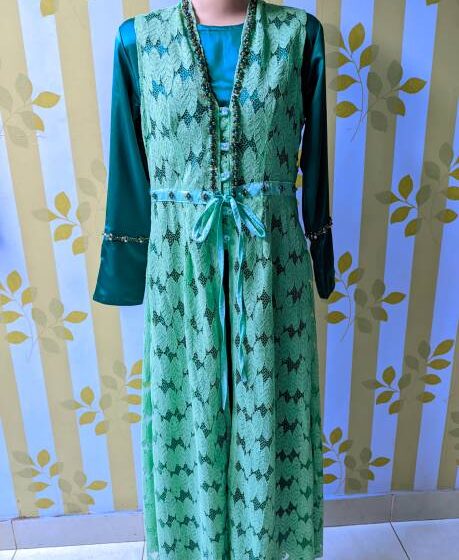In the vibrant world of fashion, certain styles endure the test of time, not only for their aesthetic appeal but also for their deep cultural significance. One such enduring art form is Chikankari, an ancient embroidery technique that beautifully melds tradition with modern fashion sensibilities. Chikankari cotton dresses epitomize this union, offering wearers a blend of elegance, comfort, and cultural heritage. This article delves into the rich history of Chikankari, its unique features, and its contemporary relevance in fashion.
The Historical Tapestry of Chikankari:
Chikankari, originating from the Persian word “chikan,” meaning embroidery, is believed to have been introduced to India by Mughal Empress Noor Jahan in the 17th century. The art flourished in the courts of the Mughal emperors, known for their patronage of the arts. Initially, Chikankari was done on muslin, a fine, delicate cotton fabric, which allowed the intricate embroidery to stand out.
Transitioning from royal courts to the common people, Chikankari became an integral part of Indian textile traditions. The city of Lucknow, in the northern state of Uttar Pradesh, emerged as the hub of Chikankari, a status it maintains to this day. Artisans in Lucknow honed their skills over generations, preserving the purity of the craft while also adapting to changing times and tastes.
The Craftsmanship Behind Chikankari:
What sets Chikankari apart is the meticulous handwork involved in its creation. The process begins with designing the pattern, which is then printed on the fabric using a washable blue ink. Skilled artisans, predominantly women, then painstakingly hand-embroider the designs using a needle and thread. The most common stitches include the ‘bakhiya’ (shadow work), ‘phanda’ (knotted style), and ‘jaali’ (netting effect), each contributing to the distinctive texture and beauty of Chikankari.
Chikankari embroidery is typically done on light, breathable fabrics like cotton, which not only enhances the delicate needlework but also makes the garments suitable for India’s hot and humid climate. The choice of cotton adds to the comfort and versatility of Chikankari dresses, making them ideal for both casual and formal wear.
Chikankari Cotton Dresses: A Fashion Statement
While rooted in tradition, Chikankari has evolved significantly to cater to contemporary fashion sensibilities. Modern Chikankari cotton dresses come in various styles, from kurtas and anarkalis to maxi dresses and tunics. The adaptability of Chikankari to different cuts and designs has made it a favorite among fashion enthusiasts globally.
Versatility in Design:
One of the defining features of Chikankari cotton dresses is their versatility. These dresses can be styled in myriad ways to suit different occasions. For a casual day out, a simple Chikankari kurta paired with jeans or leggings exudes effortless charm. For more formal events, a Chikankari anarkali with intricate embroidery and complementary accessories can create a regal look.
Moreover, Chikankari dresses are not confined to traditional silhouettes. Designers have experimented with contemporary cuts, asymmetrical hemlines, and fusion styles, ensuring that there is a Chikankari dress for every fashion palate. Whether it’s a bohemian maxi dress or a chic summer dress, Chikankari seamlessly blends with modern trends while retaining its classic appeal.
The Palette of Chikankari:
Chikankari cotton dresses are available in a spectrum of colors, though the traditional white-on-white (known as ‘whitework’) remains an all-time favorite. This monochrome aesthetic emphasizes the intricacy of the embroidery, allowing the craftsmanship to shine. However, contemporary Chikankari has embraced a broader color palette, incorporating pastels, bright hues, and even contrasting threads to create striking designs.
These color variations make Chikankari dresses suitable for different seasons and occasions. Soft pastels and whites are perfect for summer, reflecting a breezy, light vibe. Meanwhile, bolder colors and richer fabrics like silk blends are ideal for festive occasions and evening wear.
Embellishments and Enhancements:
Modern Chikankari cotton dresses often feature additional embellishments such as sequins, mirror work, and beads. These enhancements add a touch of glamour, making the dresses suitable for weddings, parties, and other celebratory events. The fusion of Chikankari with other embroidery techniques and embellishments showcases the evolving nature of this art form, catering to contemporary tastes while preserving its traditional essence.
Sustainability and Ethical Fashion:
In recent years, there has been a growing awareness and appreciation for sustainable and ethically produced fashion. Chikankari, by its very nature, aligns with these principles. Most Chikankari embroidery is handcrafted, supporting local artisans and promoting slow fashion. By choosing Chikankari cotton dresses, consumers are not only embracing a piece of cultural heritage but also contributing to the livelihoods of skilled craftspeople.
Moreover, the use of natural fibers like cotton enhances the sustainability quotient of Chikankari dresses. Cotton is biodegradable and has a lower environmental impact compared to synthetic fabrics. Thus, Chikankari cotton dresses offer a stylish, eco-friendly alternative to mass-produced, fast fashion garments.
The Global Appeal of Chikankari:
The allure of Chikankari has transcended Indian borders, capturing the imagination of fashionistas worldwide. International designers and fashion houses have incorporated Chikankari into their collections, showcasing it on global runways. Celebrities and influencers have also played a significant role in popularizing Chikankari, wearing it on red carpets and in everyday settings.
This global recognition has not only boosted the demand for Chikankari dresses but also highlighted the rich cultural heritage they represent. Fashion enthusiasts across the world appreciate Chikankari for its intricate beauty, versatility, and timeless elegance, making it a cherished addition to any wardrobe.
Caring for Chikankari Cotton Dresses:
To ensure the longevity of Chikankari cotton dresses, proper care is essential. Given the delicate nature of the embroidery and the fabric, it is recommended to hand wash these garments with mild detergent. If machine washing is necessary, using a gentle cycle and placing the dress in a laundry bag can help protect the intricate work.
Drying Chikankari dresses in the shade rather than direct sunlight prevents the fabric from fading and the embroidery from weakening. Ironing should be done on a low heat setting, ideally with the garment turned inside out to avoid direct contact with the embroidery.
By following these care tips, wearers can preserve the beauty and quality of their Chikankari dresses, ensuring they remain a treasured part of their wardrobe for years to come.
Final Words:
Chikankari cotton dresses are a testament to the timeless appeal of traditional craftsmanship in the ever-evolving world of fashion. With their intricate embroidery, versatile designs, and cultural significance, these dresses beautifully bridge the gap between heritage and contemporary style. As the fashion industry continues to embrace sustainable and ethical practices, Chikankari stands out as a shining example of how tradition can meet fashion, offering elegance, comfort, and a touch of history in every stitch.
By choosing Chikankari, fashion enthusiasts not only adorn themselves with exquisite attire but also celebrate and support an age-old art form that has been lovingly preserved and passed down through generations. In the seamless blend of tradition and fashion, Chikankari cotton dresses remain a timeless treasure, embodying the beauty and richness of Indian heritage.




